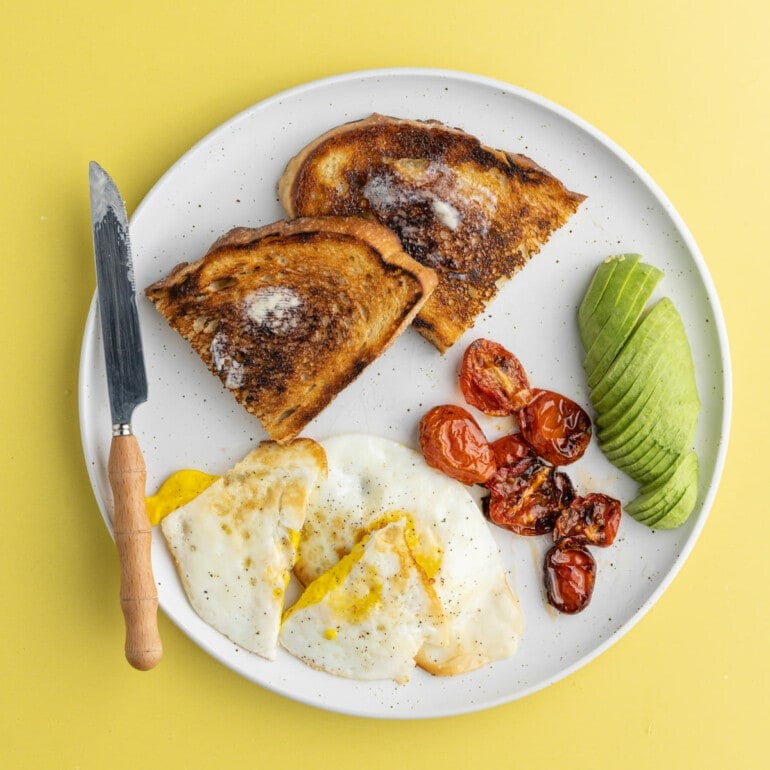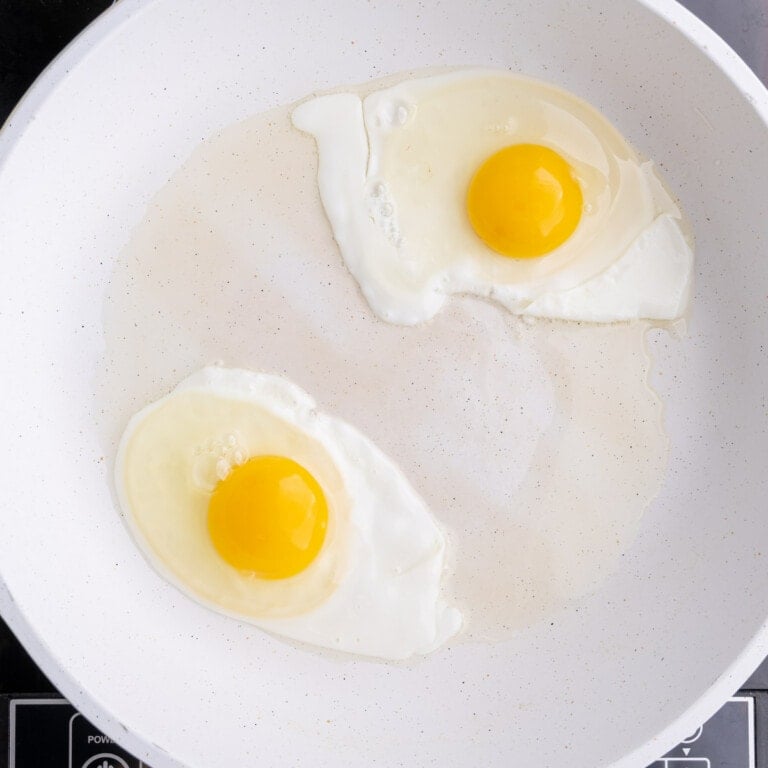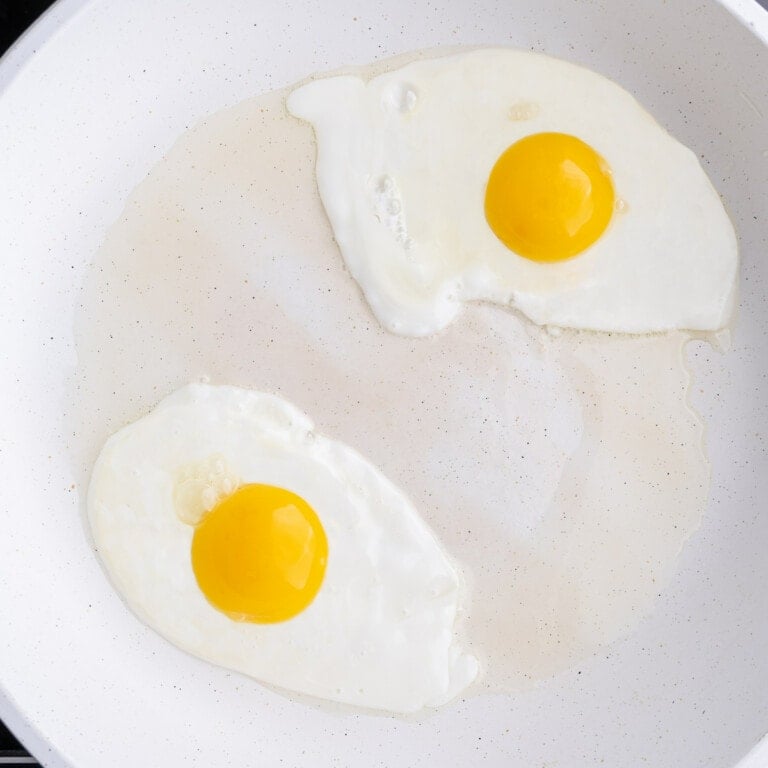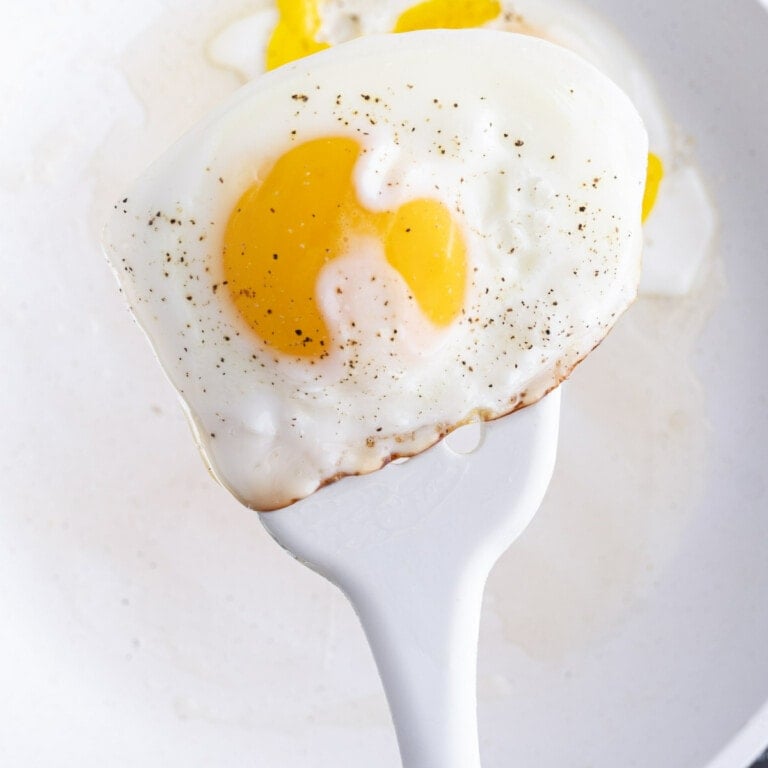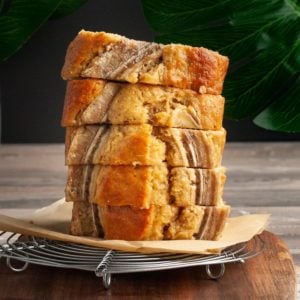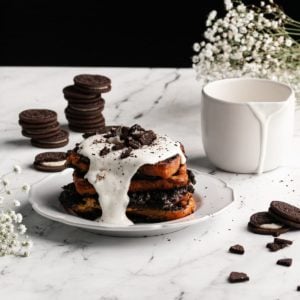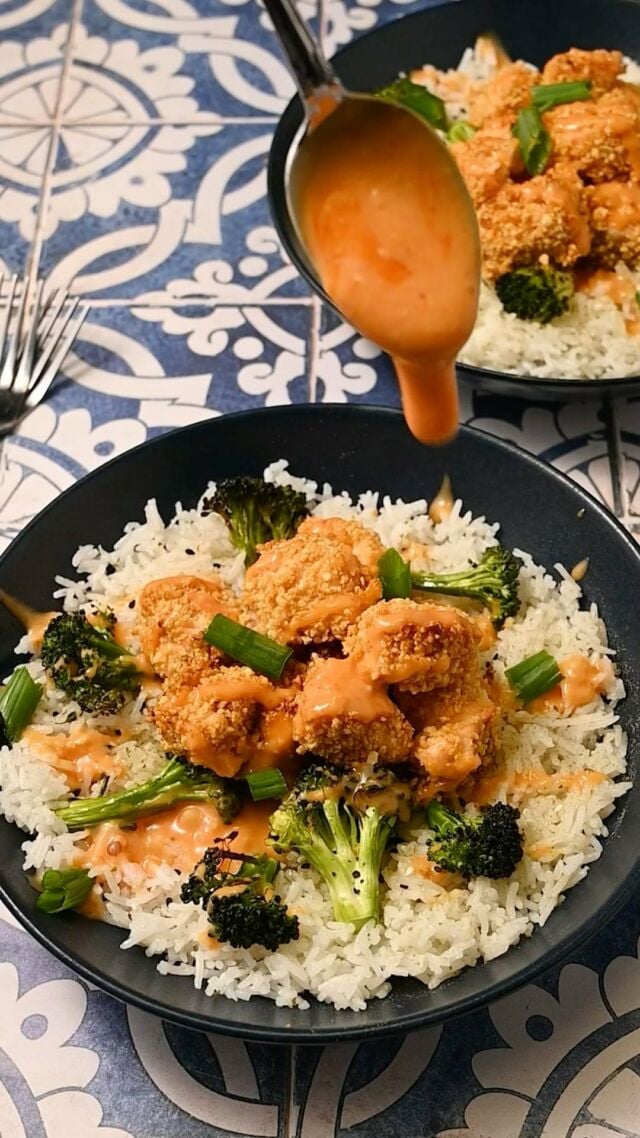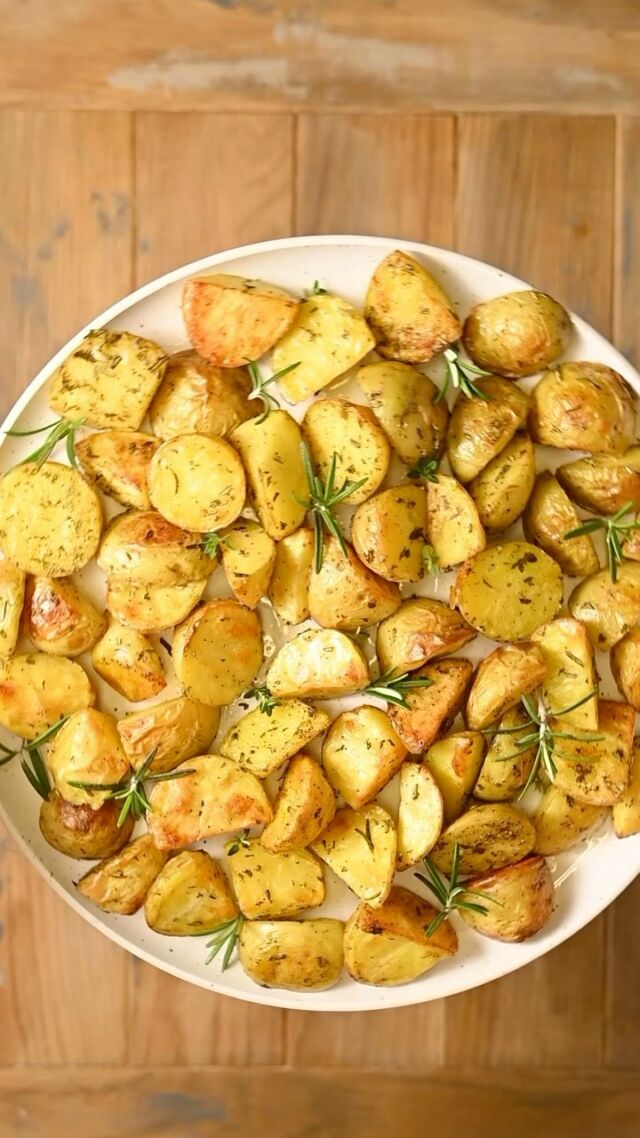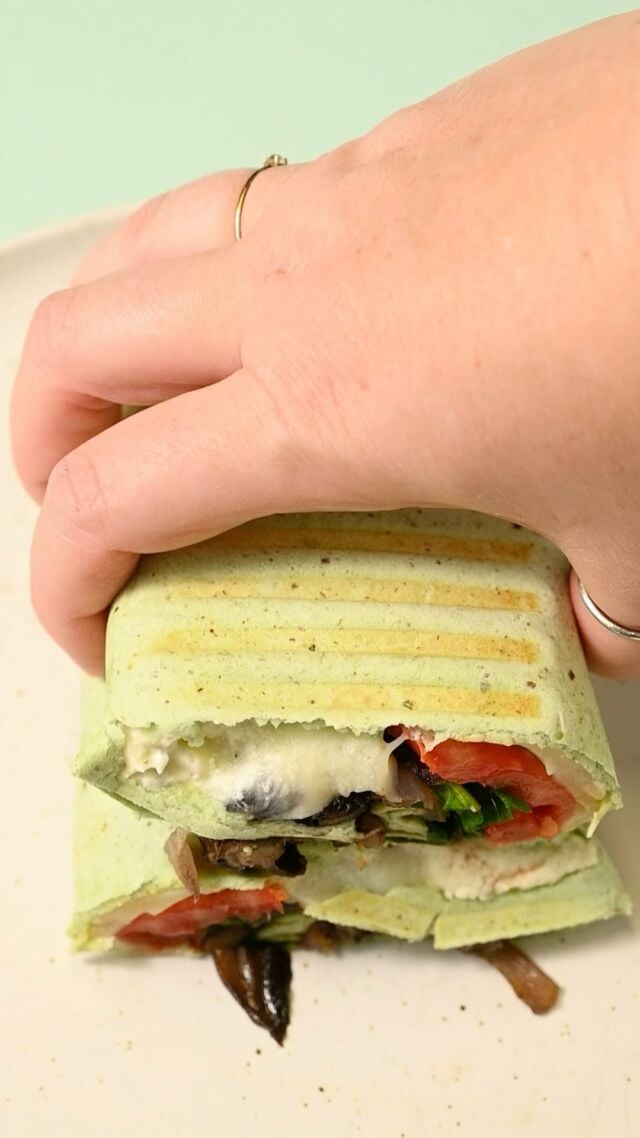Want a delicious fried egg but not a fan of runny yolk? These 5-Minute Over Hard Eggs are super easy to make and add protein, nutrients, flavor, and texture to any meal — breakfast or not!
This recipe uses oil instead of butter for a lighter version and teaches you how to easily fry an egg over hard.
You will learn everything from how to tell if your eggs are fresh to the difference between the different types of fried eggs, as well as a step by step of how to get that perfect over hard egg every single time.
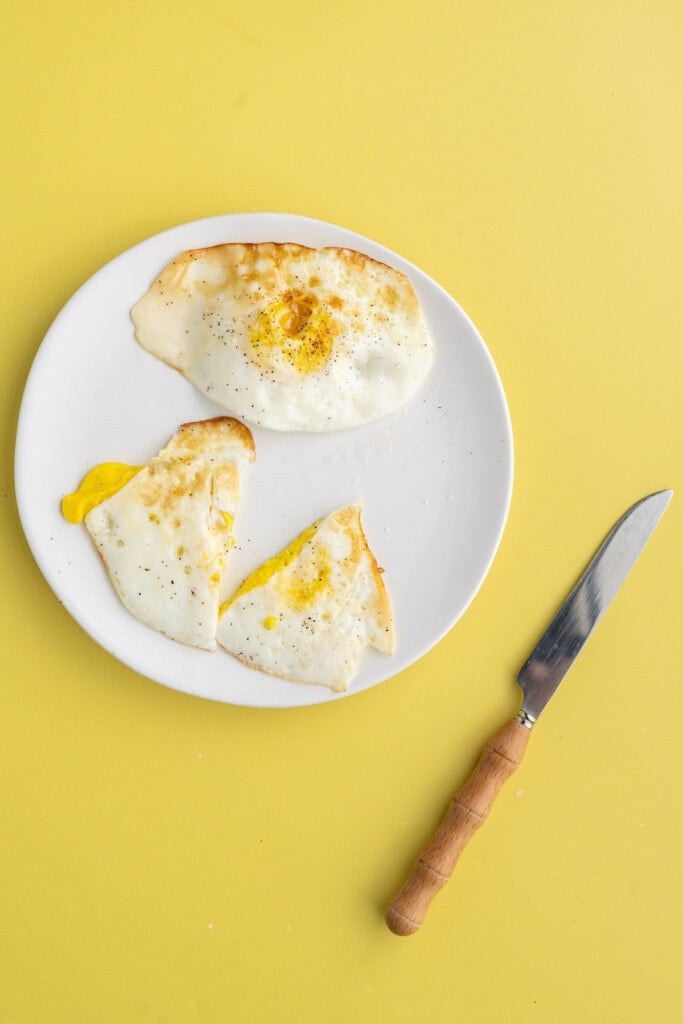
As an environmental scientist, I try hard to make great choices when it comes to sourcing ingredients—especially when those ingredients have a higher impact on the environment like fish, dairy, and eggs (and meat, if you’re a meat eater!).
And as a pescatarian, eggs are a huge part of my diet as a great source of protein, especially on days when I’m not eating fish. That being said, the quality of the eggs you purchase can make a difference to your ecological footprint!
Green tip: Look for pasture-raised eggs (over free-range or cage-free) to support agriculture that is less reliant on chemicals and fossil fuels.
Over Hard Eggs Ingredients
Here’s everything you need to make perfect over hard eggs:
- Eggs. I use large, brown, pasture-raised eggs.
- Olive oil. Or butter. Both works. I prefer olive oil as a lighter and healthier option, plus I find it gets the edges slightly cripsier.
- Salt & pepper. To season.
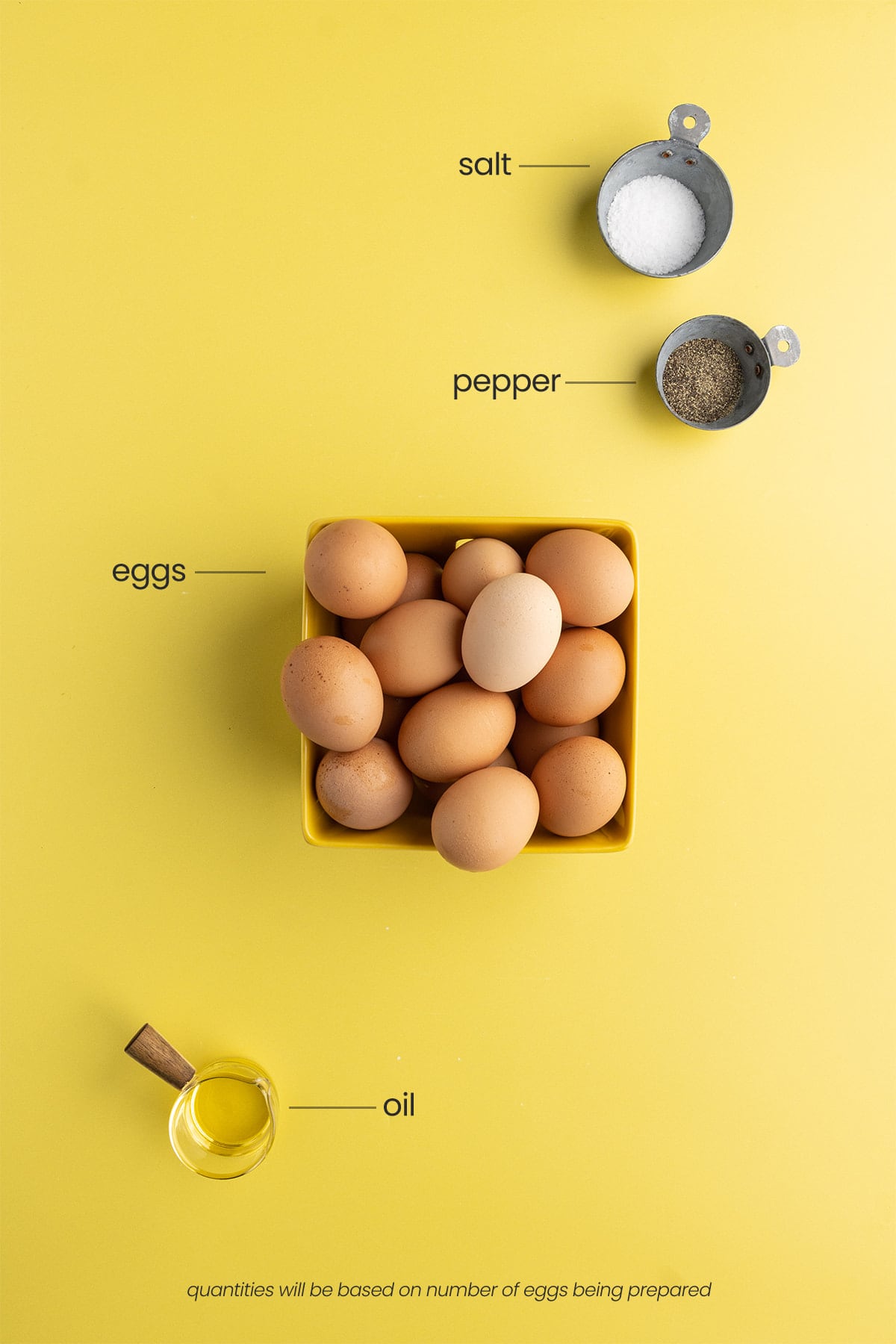
How to Add Extra Flavor to Over Hard Eggs
While you only need the basics (oil, salt, and pepper) to get delicious fried eggs over hard, there are plenty of ways to enhance them! Here are some of my favorite optional flavor-boosters:
- Chives or green onion. To garnish after frying.
- Red Pepper Flakes. To add some spice while frying.
- Cheese. Like cheddar, gouda, Havarti, Swiss, muenster, or Parmesan.
- Hot sauce. Like a classic Tabasco-style or Sriracha. Use your favorite!
- Garlic. Minced to add to the pan while frying the eggs.
- Chili oil. Or other flavored oil to fry the eggs in.
- Fresh herbs. Like thyme, basil, parsley, dill, cilantro, oregano, or rosemary.
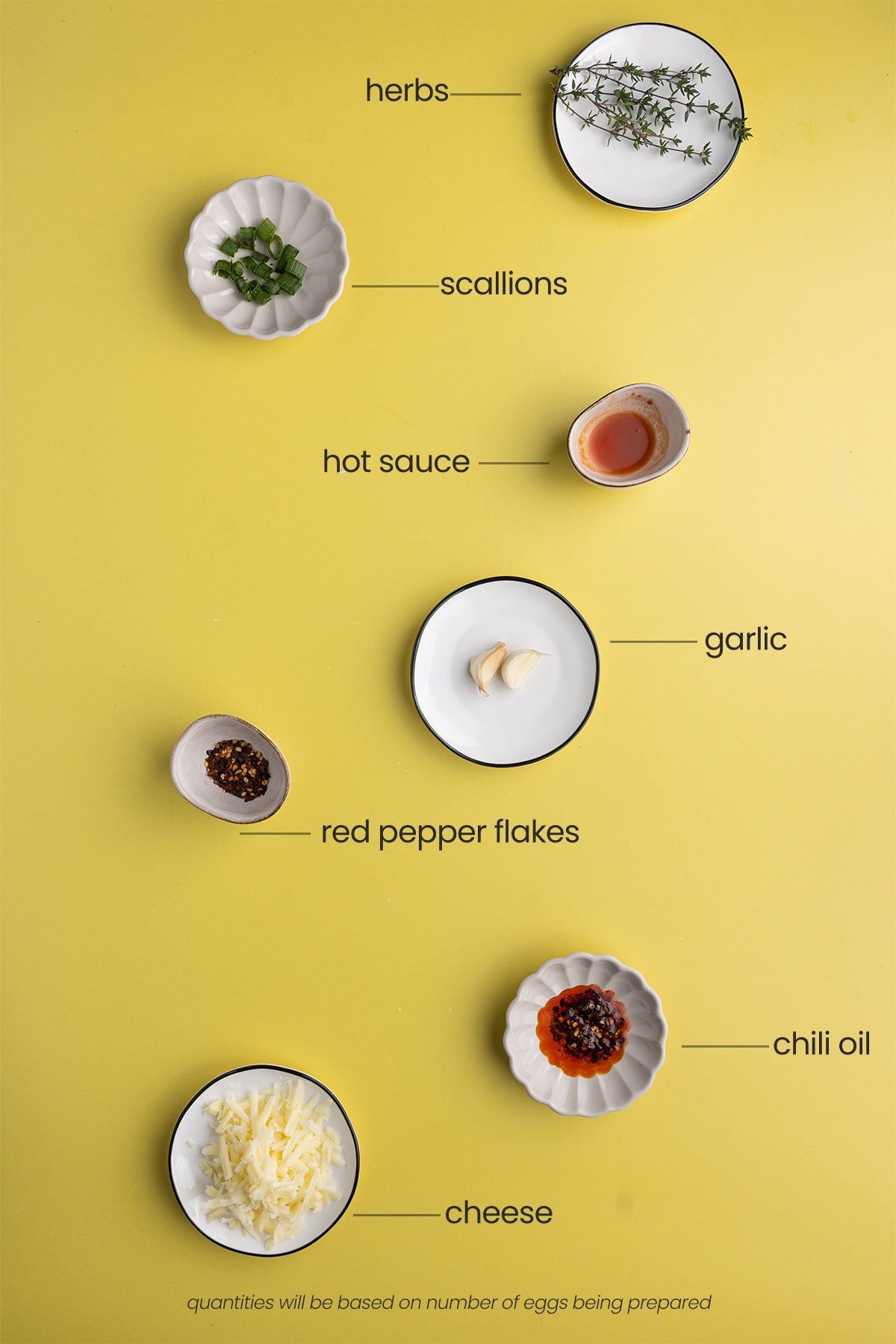
Fried Eggs Over Hard Tips and Tricks
How To Tell If Eggs Are Fresh
Of course, whether they are fired, boiled, or scrambled, eggs taste best when they are fresh!
There are a number of easy ways to tell if your eggs are fresh, starting with just looking at them! Once you’ve cracked your egg, check the inside of the shell for mold. It usually will look like little black or brown spots.
Another easy way to check an eggs freshness is the smell. Fresh eggs have almost no odor. If you crack an egg open and notice a pungent smell, chances are, bacteria have entered your eggshell and contaminated your egg.
The third and final surefire way to tell if your eggs are fresh is by performing a simple float test. Fill a glass with water and carefully drop the egg in.
Super-fresh eggs will sink to the bottom and settle on their side, as pictured below. If your eggs are still somewhat fresh and safe to eat, they’ll also sink to the bottom, but will likely stand up on the small end.
If your eggs have gone bad, they will not sink at all, and instead will just float at the top of your water. In this case, the eggs should not be eaten.
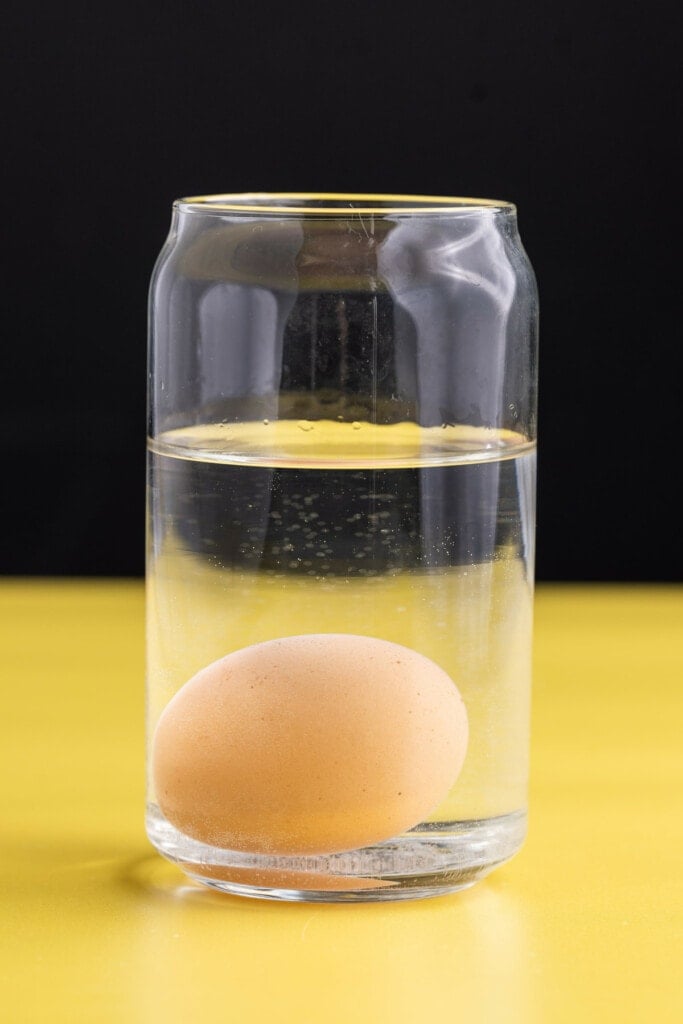
Crack Your Eggs into Ramekins First and Don’t Overcrowd Your Pan
While we are on the topic of checking for freshness in your eggs, it’s always best to crack your eggs into a little ramekin or bowl instead of directly cracking them into your pan. The reasoning behind this is threefold:
One, it allows you to check that your egg is fresh and gives you a chance to remove any eggshells that may accidentally fall into your cracked eggs. You always want to make sure you are starting out with a fresh, shell-free egg to fry.
Green tip: Did you know eggshells can be composted? Check out this article on how to compost eggshells.
Secondly, it gives you more control over where you are placing the egg in your pan. It’s best not to overcrowd the pan so that your eggs cook more evenly and are easier to access when you are ready to flip.
Thirdly, it will allow you to get closer to the pan when you drop your egg in. Carefully sliding the already-cracked egg out from the ramekin and into the pan at close range will mean you are less likely to break the yolk.
When Frying Eggs, Use a Nonstick Pan
In this simple recipe, the hardest part is flipping the egg. To make it easier on yourself, use a nonstick pan. While of course the olive oil will help, the nonstick pan enables you to easily slide your spatula underneath the egg to get that perfect fried egg over hard.
Green tip: Look for non-toxic cookware that is free from PFAS, PTFE, lead, cadmium, and heavy metals, for the most environmentally friendly pots and pans! There are still nonstick options that are also non-toxic. I use these Caraway pans.
Should You Fry Eggs in Oil or Butter?
This, my friends, is up for debate!
While many argue that butter is the best for frying eggs (and I must agree, it does add a delicious, buttery flavor), I stand with oil for my over hard eggs.
They both work well to ensure the eggs don’t stick to the pan and are easy to flip. They also help the frying process and get you those delicious crispy edges on your fried eggs.
High-quality extra virgin olive oil will add to the depth of flavor and is an overall healthier and more sustainable option when compared to butter. Plus, the milk solids in the butter burn faster than the fats in the oil, meaning you are less likely to burn your eggs when cooking them in oil.
Whether you are using butter or olive oil, the first step to making the best eggs over hard is getting that butter or oil hot in the pan.
Add the oil (or butter) to your frying pan over medium-low heat, and allow it to heat up for a minute or two before adding your eggs.

Different Types of Fried Eggs
Fried eggs come in four different variations, distinguished by their cooking time and of course, the runniness of their yolks.
A sunny side up egg will have the least-cooked yolk. As you may have guessed by the name, it is only fried on one side. To make a sunny side up egg, you simply add your egg to your pan with your hot oil or butter and fry it just until the whites are opaque.
The sunny side up egg is served just like that, without ever flipping it in the pan to cook it on the second side. This is a delicious and easy option if you like a super-runny yolk.
An over easy egg has a similarly runny yolk but is distinguished from a sunny side up egg because it is cooked on both sides. To make an over easy egg, again allow the egg to fry until the white is opaque.
Then, remove your pan from the heat, flip the egg, and allow the residual heat on the pan to cook the second side of the egg for about 1 minute. Then, it’s ready to serve!
Over medium eggs use exactly the same technique as the over easy eggs, but this time, do not remove your pan from the heat. Once you flip the egg, allow the egg to cook on the second side over medium-low heat for about 1 minute.
This will yield a moderately runny yolk, with a slightly golden-brown egg around the edges.
While the technique for over hard eggs is similar to over easy and over medium eggs, this time you will have a yolk that is completely cooked through. We will get into detail on how to get a perfect over hard egg below.
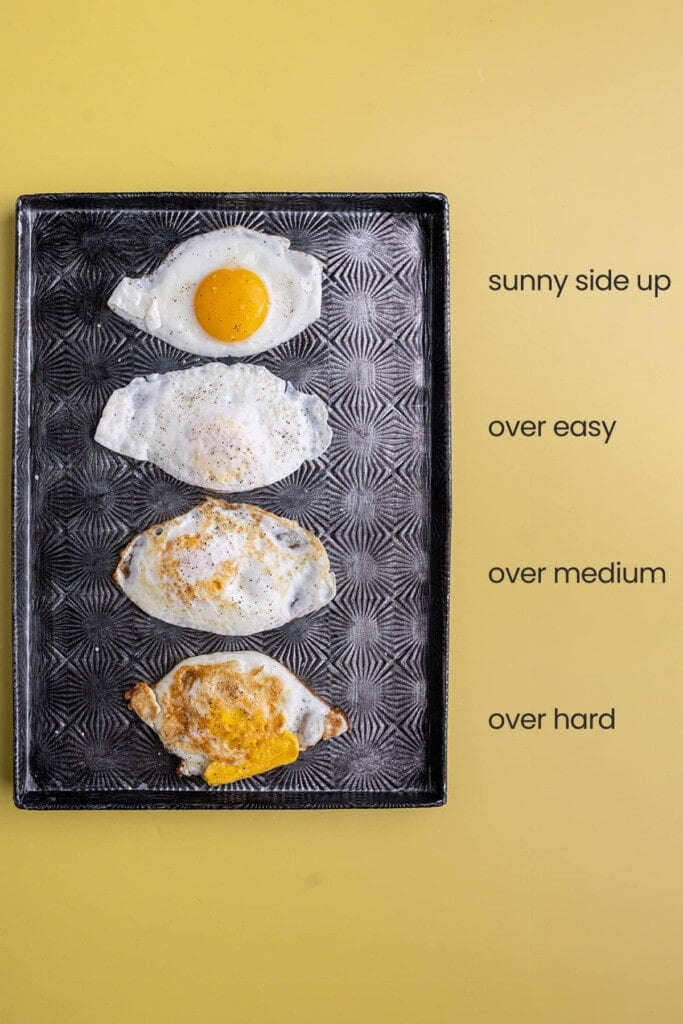
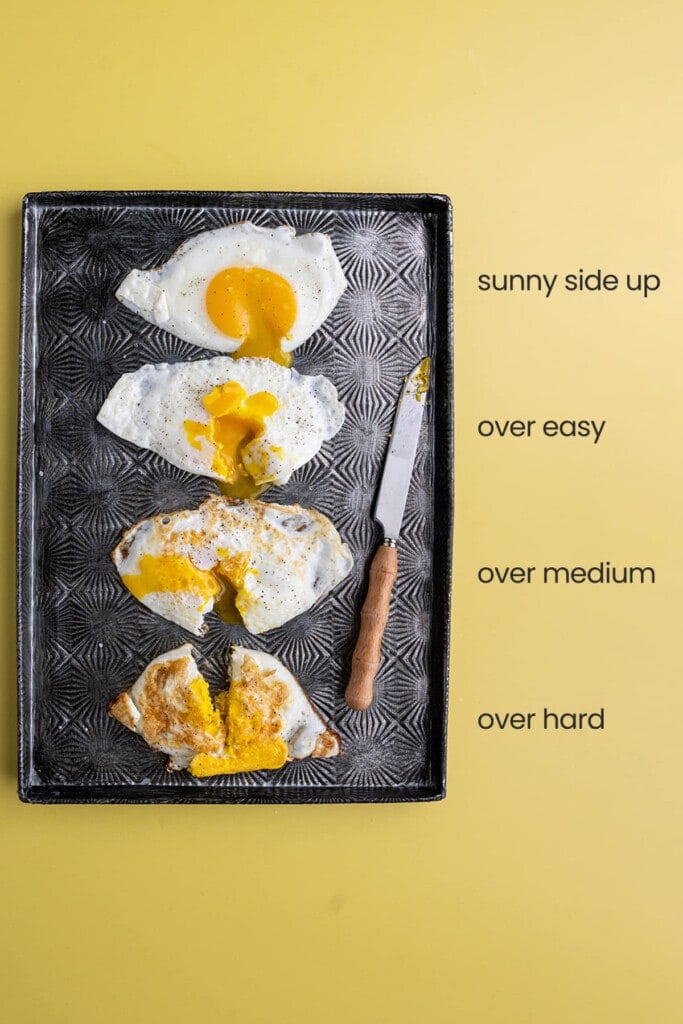
Wait Until the White Turns Opaque
Watching the egg whites closely will give you a visual indicator of when the eggs are ready to flip. Once your oil is hot and you’ve transferred your cracked eggs from the ramekin into the hot pan, watch as the egg whites turn from translucent to opaque white.
This usually takes about 2 minutes. Once the egg whites are opaque, you’ll know they are ready to flip. This is the same for over easy and over medium eggs, too!
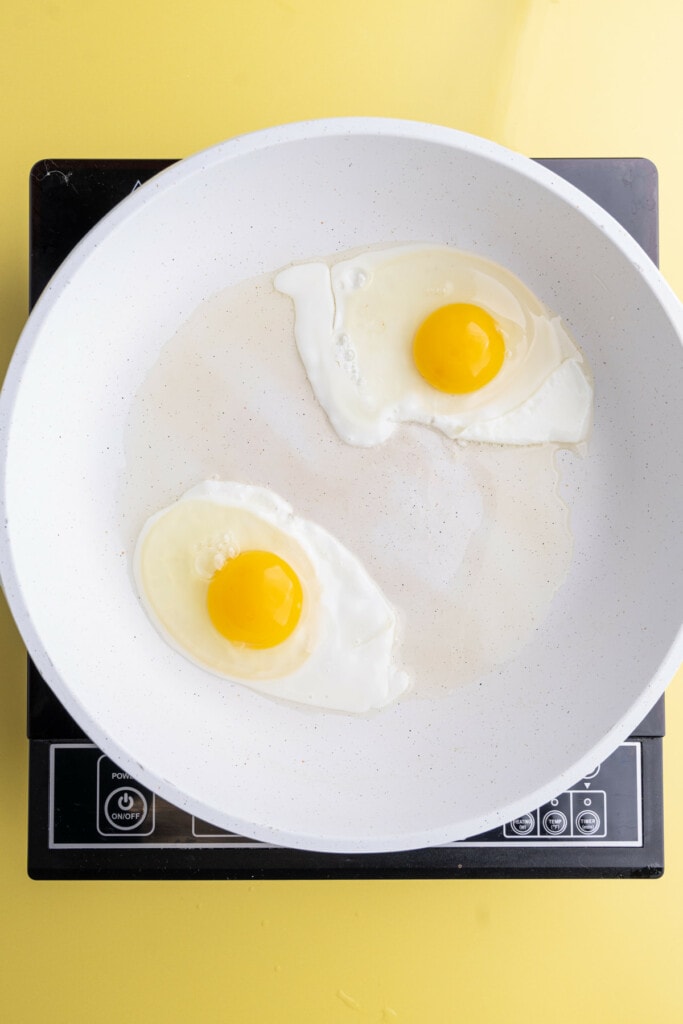
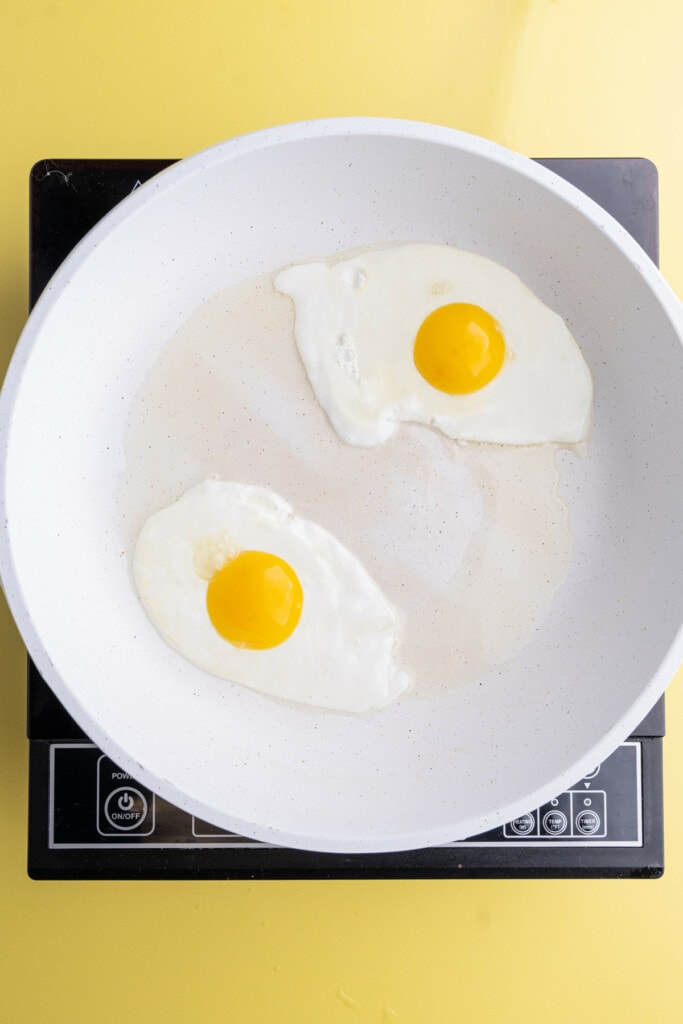
Option to Pierce the Yolk
There are two ways to get a delicious over hard egg. One option is to use a knife to pierce the yolk before flipping your egg. This technique is demonstrated on the top egg in the pictures below. This will more evenly distribute the yolk throughout the egg.
The second option is to leave your egg yolk intact. This will mean the yolk stays in the center. In this case, the egg will likely need about an extra minute of cooking time.
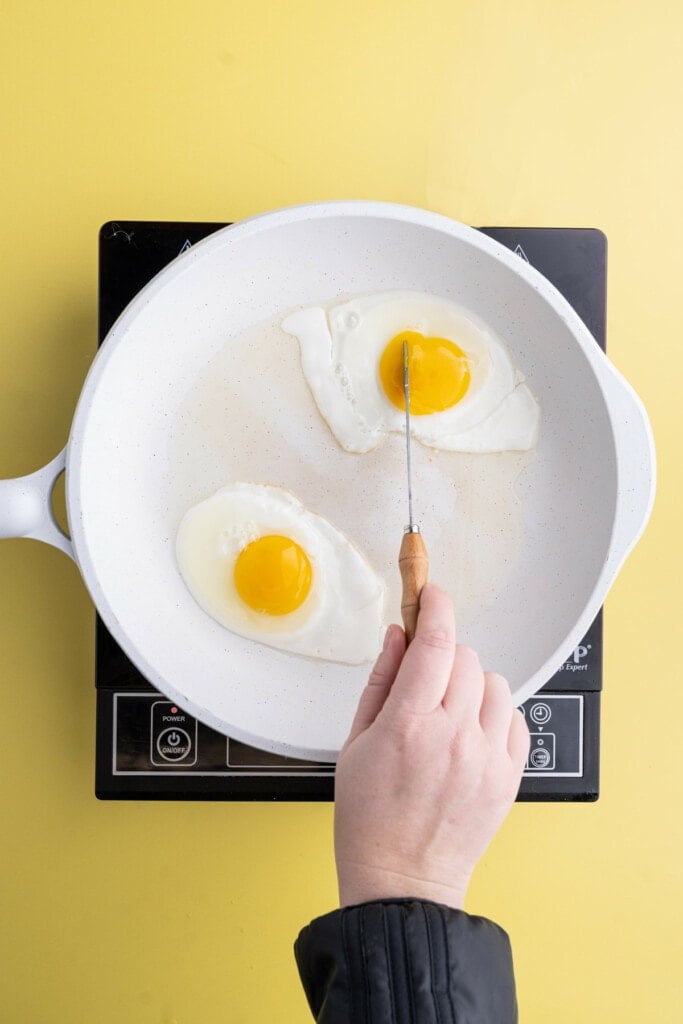
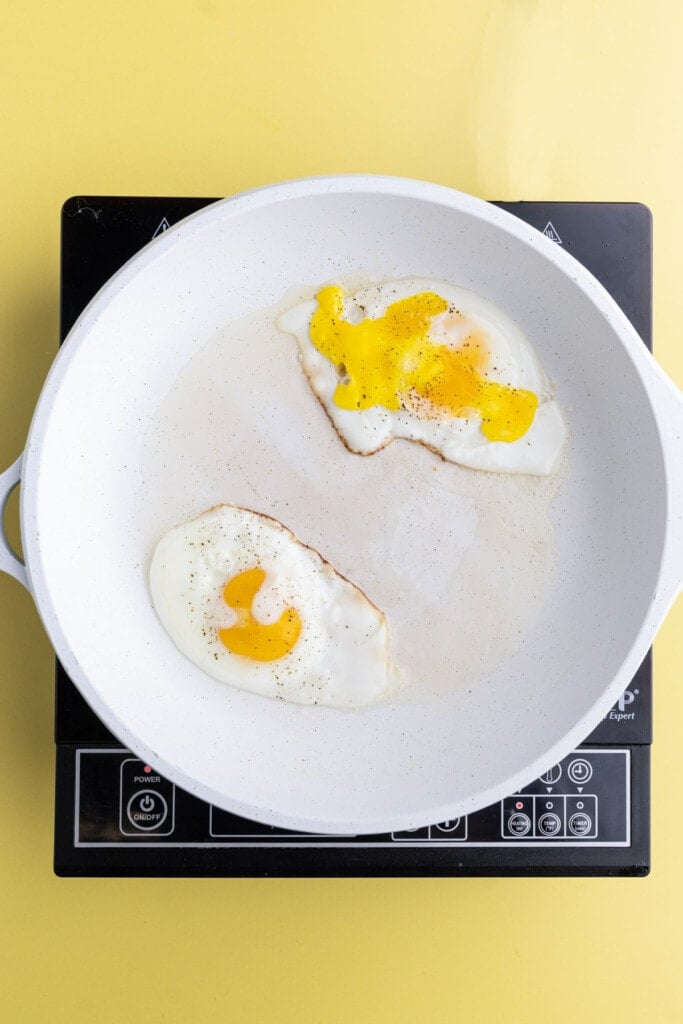
Use a Spatula to Flip Eggs Over Hard
Arguably the most difficult part of this simple recipe is flipping the eggs. Again, it’s important to not overcrowd the pan so you can easily get under your eggs to flip them. I only cook two eggs at a time.
Once your egg white is opaque and you are ready to flip, slide a spatula underneath the egg, lift it upwards, and flip it onto the uncooked side.
I like to use a thin, silicone spatula rather than metal so I do not scratch the surface of my nonstick pan.
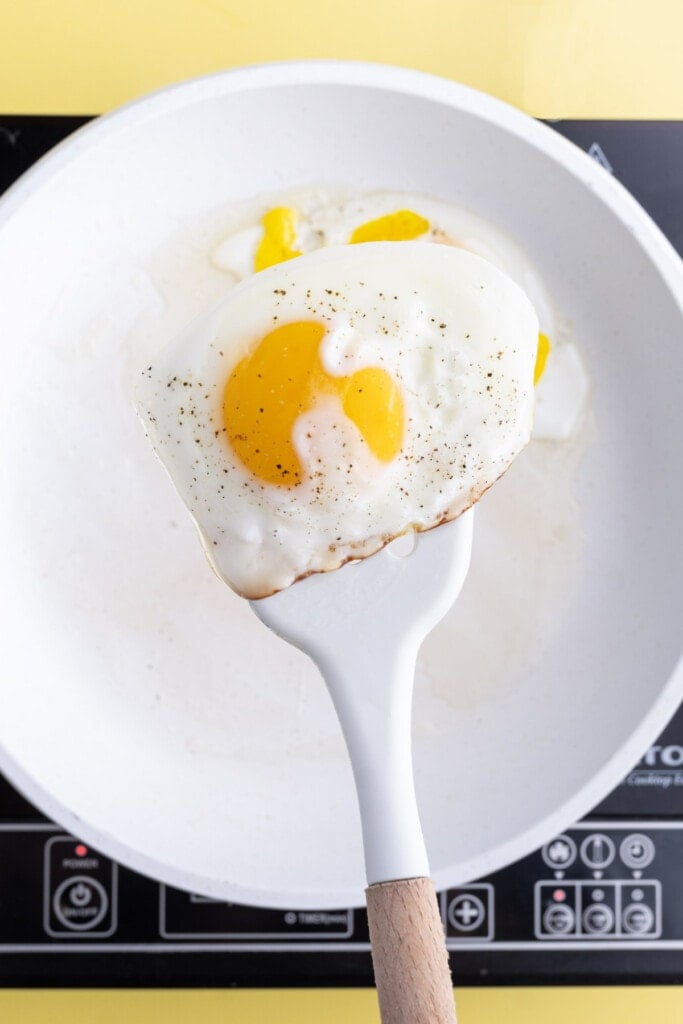
The Edges of Over Hard Eggs Should Be Crispy
Once you’ve flipped your egg, it typically takes about 2-3 minutes for the egg to reach over hard status. You’ll know your eggs are ready when the yolk is completely cooked through.
The edges of your over hard egg will be golden brown and crispy.
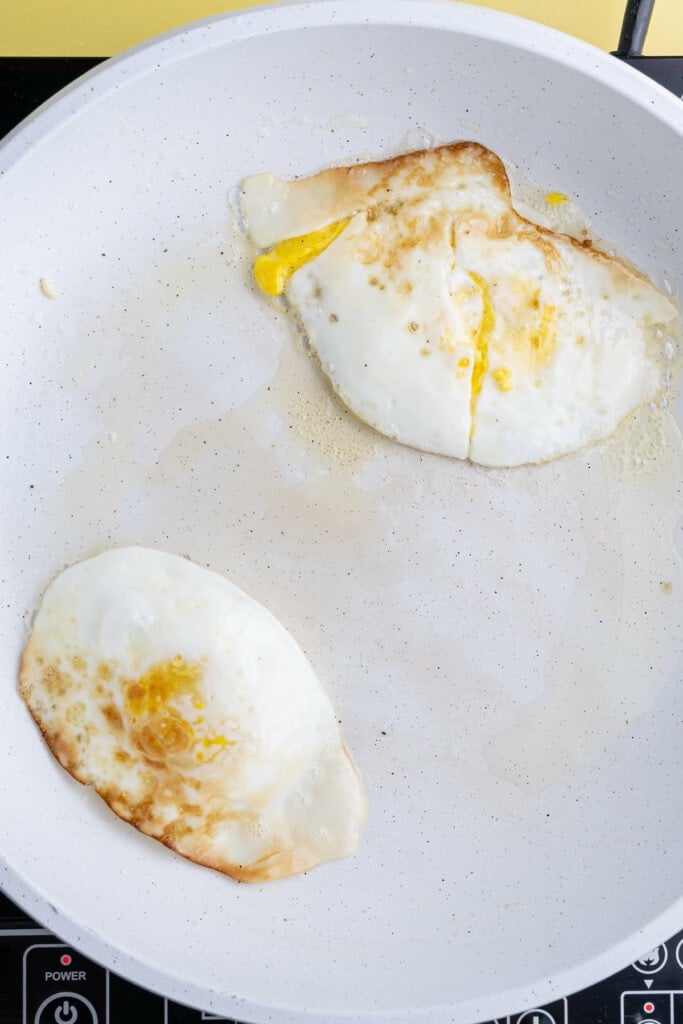
Wipe the Pan Between Batches
If you’re making a large batch of eggs, it’s still best to only fry two at a time to avoid overcrowding. In this case, wipe the pan clean between batches.
Green tip: Paper products contribute to deforestation. Consider these bamboo paper towels! Bamboo naturally regenerates every few months, whereas trees cannot regrow once harvested.
It’s okay if there is a little oil left in the pan, but make sure you clean out any little bits of egg that are left behind and any oil that has burned and turned brown.
It’s best to start with a clean slate so that you don’t get a burnt flavor.
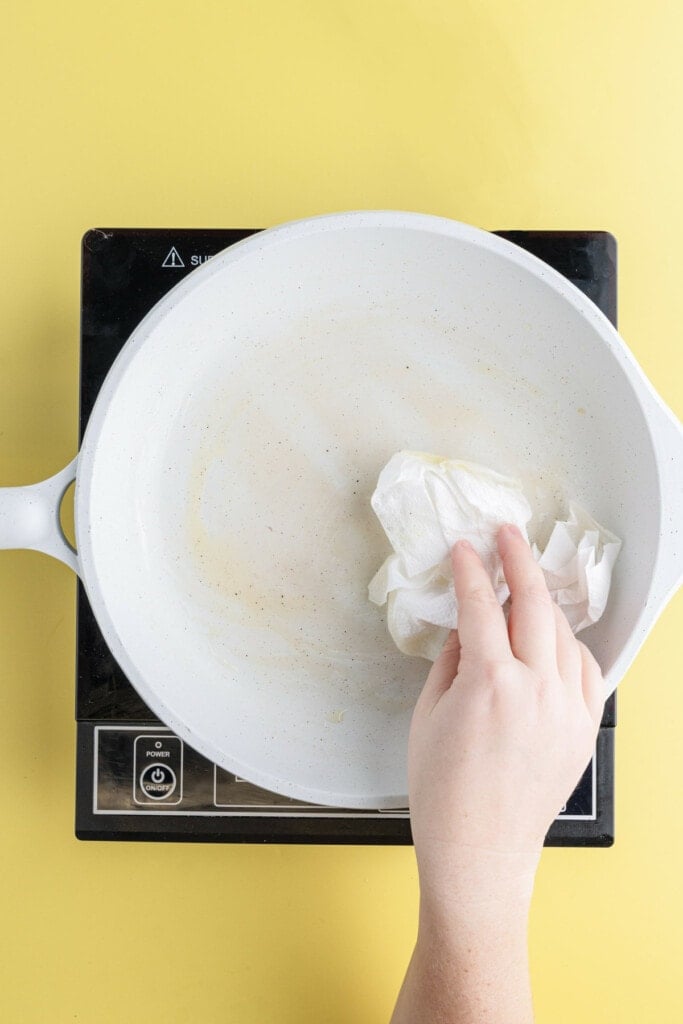
How to Serve Over Hard Eggs
I love fried eggs over hard because they are versatile!
Here are some of my favorite ways to serve over hard eggs:
- On avocado toast.
- Over roasted veggies like this Cast Iron Asparagus.
- On a breakfast platter or breakfast sandwich with these Vegan Sausage Patties.
- Over these Sweet Potato Zucchini Fritters.
- With these Vegetarian Southern Biscuits and Gravy.
- On a plate with pancakes or French toast as a savory addition.
- To add extra protein to a quinoa bowl.
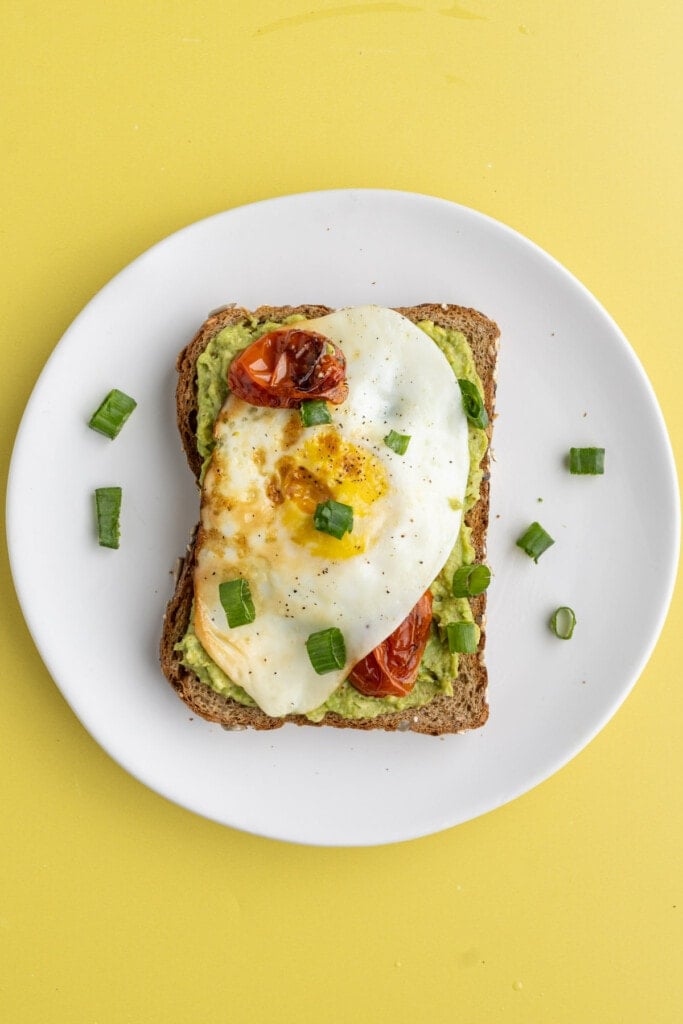
How to Store Over Hard Eggs
If you have leftover over hard eggs, they will stay fresh in an airtight container in the refrigerator for about 1 week. They can also be stored in a freezer-safe bag and frozen for up to a year.
To reheat, add just a dash of oil to a frying pan and get the oil hot over medium heat. Add the refrigerated or frozen egg to the pan and cover. Heat until its thoroughly warmed.
This will usually take about 5 minutes for a refrigerated leftover egg and ten minutes for a frozen one.
Green tip: Did you know that of the billions of pounds of food wasted annually, it is estimated that 50% of it happens in our homes? Limit your contribution to food waste by properly storing, reheating, and enjoying leftovers!
Egg Over Hard Frequently Asked Questions
What does over hard mean for eggs?
Over hard for eggs means that the egg has been cooked in a frying pan, fried on both sides until the egg yolk is completely solid.
What are the types of fried eggs?
Fried eggs can be made four different ways:
- Sunny side up. A sunny side up egg is fried only on one side, until the egg whites are opaque. The yolk in a sunny side up egg is barely cooked and extra runny.
- Fried over easy. An over easy egg is fried on both sides, but the yolk remains barely cooked and just like sunny side up eggs, is very runny.
- Fried over medium. Over medium eggs are fried on both sides, with the yolks partially cooked. They will often have a slight golden-brown color and be moderately crispy on the edges.
- Fried over hard. Eggs fried over hard are cooked on both sides until the yolk is well-done. They are sometimes called egg over-well. Sometimes, the yolk is pierced so that it cooks evenly throughout the egg white.
Is fried egg and over hard the same?
Over hard eggs are a type of fried egg that are cooked well-done with no runny yolk.
Why You Should Make these 5-Minute Over Hard Eggs
- They’re simple. You don’t need tons of ingredients or fancy gadgets to make a perfect over hard egg.
- They’re quick. 5 minutes of cooking time tops!
- They add value to any dish. In the way of protein, nutrients, flavor, and texture!
If you’re loving these 5-Minute Over Hard Eggs and want more egg dishes, check out this Lox and Schmear Omelet and this Smoked Salmon Eggs Benedict.
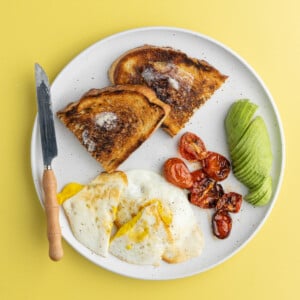
5-Minute Fried Over Hard Eggs
Equipment
Ingredients
Eggs Over Hard
- 1 tablespoon olive oil (or butter)
- 2 large eggs
- 1 pinch salt
- 1 pinch black pepper
Optional Flavor Enhancers
- 1 tablespoon diced scallions or chives
- 1 pinch red pepper flakes
- 2 tablespoons shredded cheese (cheddar, gouda, Havarti, Swiss, muenster, or Parmesan)
- 1 teaspoon hot sauce
- 1 tablespoon chili oil or other flavored oil (in place of olive oil)
- 1 tablespoon chopped fresh herbs (thyme, basil, parsley, dill, cilantro, oregano, or rosemary)
Instructions
- Crack each egg into its own small bowl or ramekin and set aside. This will give you a chance to make sure your egg is fresh and to remove any eggshells that may have fallen into your cracked egg.
- Add the olive oil to a medium nonstick saucepan over medium-low heat and allow the oil to get hot for 1 minute.
- Carefully add the eggs to the pan, leaving at least two inches of space between each egg. Optional: use a knife to pierce the yolk, so it spreads across the egg white. This will reduce the cooking time once flipped by roughly one minute.
- Allow to cook for about 2 minutes, or until egg whites are opaque.
- Crack salt and pepper on the eggs. Use a thin spatula to carefully flip the eggs, one at a time.
- Cook for an additional 2-3 minutes until egg yolks are well-done. Enjoy!
Pro Tips
- If you’re making more than 2 eggs, it’s best to do so in batches to avoid overcrowding the pan. Wipe the pan clean in between batches and use 1 tablespoon of oil per every 2 eggs.
- Now that you’ve mastered frying an egg, learn how to poach one in this Smoked Salmon Eggs Benedict recipe!
Share This Recipe
